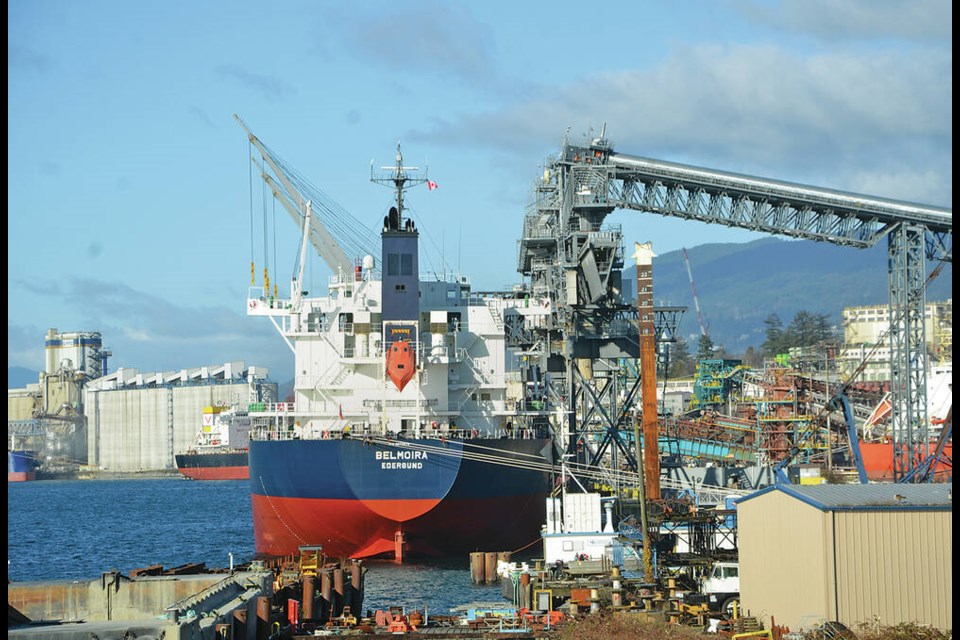After a slow start in 2022, exports from Port of Vancouver port terminals have come “roaring back” and are on track for a record year in 2023, says president and CEO of the Vancouver Fraser Port Authority Robin Silvester.
On the North Shore, exports of grain, coal and potash are among the commodities driving the boom in exports of bulk products. The impact of global events, including the war in Ukraine as well as bumper crops on the prairies, are being reflected directly in recent port activities, said Silvester.
In terms of commodities handled by North Vancouver terminals, overall figures for grain exports from the port were down 22 per cent in 2022, but 2022 was very much “a year in two parts,” said Silvester. A drought in the prairies in 2021 meant low production and grain volumes coming through the port in the first half of the year. But in October through December of 2022 “they came roaring back with a very strong harvest,” said Silvester. “We had our highest ever quarter in the last quarter of the year,” he said, with grain exports up 34 per cent. “And we’ve seen that continue into 2023,” he said.
Exports of grain, potash up in second half of 2022
Exports of potash, used in fertilizers, and sulfur, used in fertilizers and many other chemical products, are shipped through Neptune Terminal and Vancouver Wharves on the North Shore. Volumes of those products are up by 11 per cent and 22 per cent respectively in 2022.
Increased demand for Canadian potash has been driven primarily by lack of access to other major supplies in Russia and Belarus, said Silvester. Top markets for potash include China, Brazil, Indonesia and India.
Exports of coal are also up between five and seven per cent.
Coal shipments also increase
Coal shipped through Neptune Terminal in North Vancouver is metallurgical coal used in steelmaking and is in strong demand in markets including China, Japan and Korea. Most thermal coal comes from the U.S. and is exported through port terminals in Delta near the border. That is also being impacted by lack of access to Russian natural gas in Europe, said Silvester.
Container traffic down in 2022
Overall shipments through the port were down in 2022, driven both by the decrease in grain in the first half of 2022 and by a decrease in container traffic through the port. The decrease in container traffic reflects shrinking consumer demand in light of high interest rates, inflation and general financial pressures, said Silvester.
Global supply chain issues that resulted in back-ups of freighters at the port last year have mostly been resolved, said Silvester, although he added ships carrying bulk products close to the North Shore still use more anchorages than in the past.
That’s mostly due to high volumes of grain being shipped. Grain ships need dry weather to load, he said. “They don’t like to open up the holds when it’s raining.” Often when the weather isn’t co-operating, bulk freighters will just wait to load until it dries out.
Silvester said the port is also expecting a strong cruise ship season this summer. “We’re expecting a record year in terms of cruise ship passengers,” he said. That has trickle-down economic effects on tourism, said Silvester, including businesses on the North Shore.



